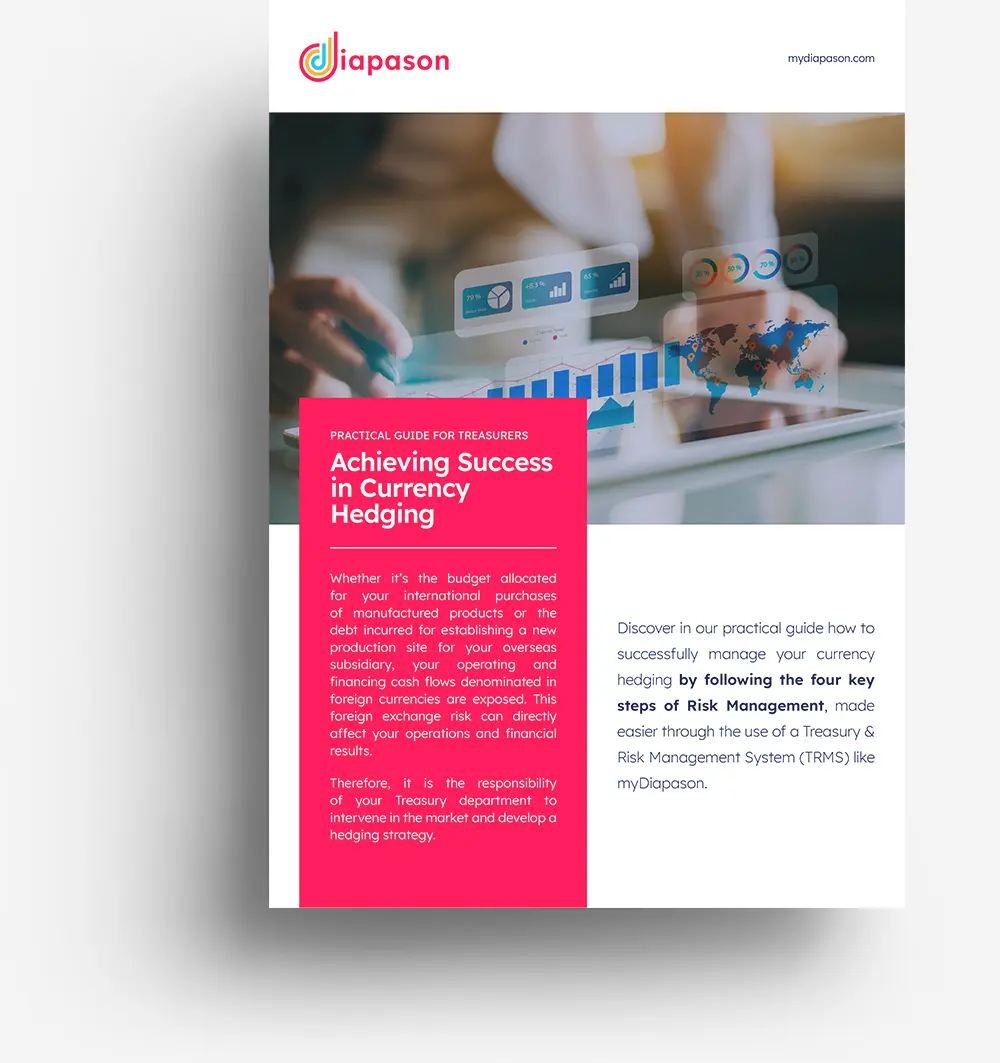What is treasury?
Treasury represents the total available liquidity at any given moment to cover the company’s daily expenses. It’s the difference between cash inflows (customer payments, subsidies, contributions) and cash outflows (payments to suppliers, wages, rent, taxes) over a given period.
In practical terms, treasury is the balance of a company’s financial accounts, including cash, bank accounts, and short-term investments. If this balance is positive, the company has a cash surplus. If it’s negative, the company has a cash deficit or treasury debt.
The treasury level fluctuates daily based on incoming and outgoing cash flows, making it a highly volatile metric that requires constant monitoring. A temporary cash surplus can quickly turn into a deficit if expenditures exceed inflows over time.
According to a 2023 study by Altares, cash flow problems are a major cause of business failures in France, with 57,729 companies declaring bankruptcy in 2023—a 36% increase from 2022. Late payments and high financing costs were cited as the most significant contributors. This highlights the importance of proactive and precise treasury management.
Components of treasury
Treasury consists of two main components:
- Immediately Available Liquidity:
-
- Cash on hand
- Bank account balances (checking, term, savings accounts)
- Easily liquidited short-term investments (e.g., money market funds, negotiable ceritificates of deposit)
- Other items considered as Treasury:
- Receivables awaiting collection (checks, bills of exchange, promissory notes)
- Confirmed bank credit lines (overdrafts, credit facilities)
La The total of these components makes up the gross treasury. To calculate net treasury, subtract the following:
- Payables yet to be disbursed (issued but not yet debited checks)
- Unconfirmed bank credit lines
- Short-term financial debts (less than one year)
Thus, the formula for net treasury is:
Net Treasury = Liquidity + Short-term Investments + Receivables – Payables – Unconfirmed Credit Lines – Short-term Financial Debts.
The Role and Importance of Treasury in Business
Treasury plays a central role in any company, and its key functions include:
Financing the operating cycle: Treasury ensures the company can pay suppliers, employees, and other operating expenses. It acts as a buffer in case of a gap between customer payments and expenses. Treasury must be sufficient to cover the company’s working capital needs.
Securing business continuity: A treasury safety net is essential for handling unforeseen events such as payment delays, disasters, or industry crises. Without reserves, the company faces a high risk of failure. It is generally recommended to maintain a cash reserve equivalent to 2 to 3 months of revenue.
Supporting growth and transformation: To expand, innovate, and transform, a company needs quick access to liquidity. A healthy treasury allows the business to seize opportunities for external growth, launch new projects, or fund major investments without resorting to debt.
How to calculate treasury rates?
Cash and Cash Equivalents (CCE)
Available cash flow at any given time is calculated by subtracting the working capital requirement (WCR) from the working capital (WC).
Working Capital (WC): The company’s stable financial resources, including equity and long-term debts (over one year).
Working Capital Requirement (WCR): The money tied up in the business to cover gaps between incoming and outgoing cash flows. It’s calculated as:
WCR = Inventory + Accounts Receivable + Other Receivables – Accounts Payable – Tax and Social Security Debts – Other Operating Debts.
Key understanding:
- If WCR exceeds WC, treasury is negative.
- If WC is greater than WCR, treasury is positive.
To maintain balance, the company must always have sufficient working capital to cover its working capital requirements. The treasury formula can be summarized as: Net Treasury = WC > WCR.
Cash flow
Cash flow is another key indicator that measures the change in treasury generated by the company’s activities over a given period (month, quarter, year). It’s calculated by adjusting net income for non-cash items:
Cash Flow = Net Income + Depreciation and Provisions – Reversals of Depreciation and Provisions +/- Gains or Losses on Asset Sales
- A positive cash flow indicates that the company is generating liquidity in addition to covering its costs.
- A negative cash flow signals a deterioration in treasury.
Tracking both WCR and cash flow can be automated with treasury management software. This provides a complete, real-time view of your financial situation, enabling the treasurer to focus on the essentials: managing cash flows, overseeing operations, and mitigating risks.
Tools for effective Treasury Management
To apply these best practices, you need an effective tool. The right treasury management software will greatly simplify your day-to-day operations. Here are the key benefits of a good treasury software:
Automating cash flow forecasts
Your software should centralize all your data (invoices, expected inflows and outflows) to instantly generate cash flow forecasts. This will help you anticipate financing needs or excess liquidity to invest.
Treasury at a given moment is calculated by taking the difference between Working Capital (WC) and Working Capital Requirement (WCR).
Working Capital (WC) represents the company’s stable financial resources, including equity and long-term debt (over one year)
Working Capital Requirement (WCR) c corresponds to the money tied up in the company to cover the gap between operating cash inflows and outflows. It is calculated as: WCR = Inventory + Accounts Receivable + Other Receivables – Accounts Payable – Tax and Social Liabilities – Other Operating Liabilities.
What you need to understand:
- If the “requirement” (WCR) is greater than the “available funds” (WC), then treasury is negative.
- If it is smaller and therefore covered, treasury is positive.
To maintain balance, a company must always have sufficient WC to cover its WCR. The treasury “magic formula” is:
Net Treasury = WC > WCR.
Real-time treasury tracking
With an intuitive interface and customizable dashboards, you can quickly view your current and forecasted bank position, WCR trends, and compliance with financial covenants. All indicators will be in place to make informed decisions.
Securing processes and data
Your software will secure the collection and processing of treasury data. It eliminates manual entry errors, forgotten items, and inconsistencies between files. Automating time-consuming tasks (data entry, bank reconciliation, reporting) allows treasury teams to focus on analysis and advisory roles, creating added value for the company.
About the Author
Valérie Lafaury, Field Marketing Manager
Valérie is the Field Marketing Manager of Diapason, the solution that streamlines corporate treasury management. She crafts press releases, in-depth articles, and timely pieces on topics related to the treasurer’s profession. Her goal is to provide treasurers with useful and practical information to optimize their treasury management.








